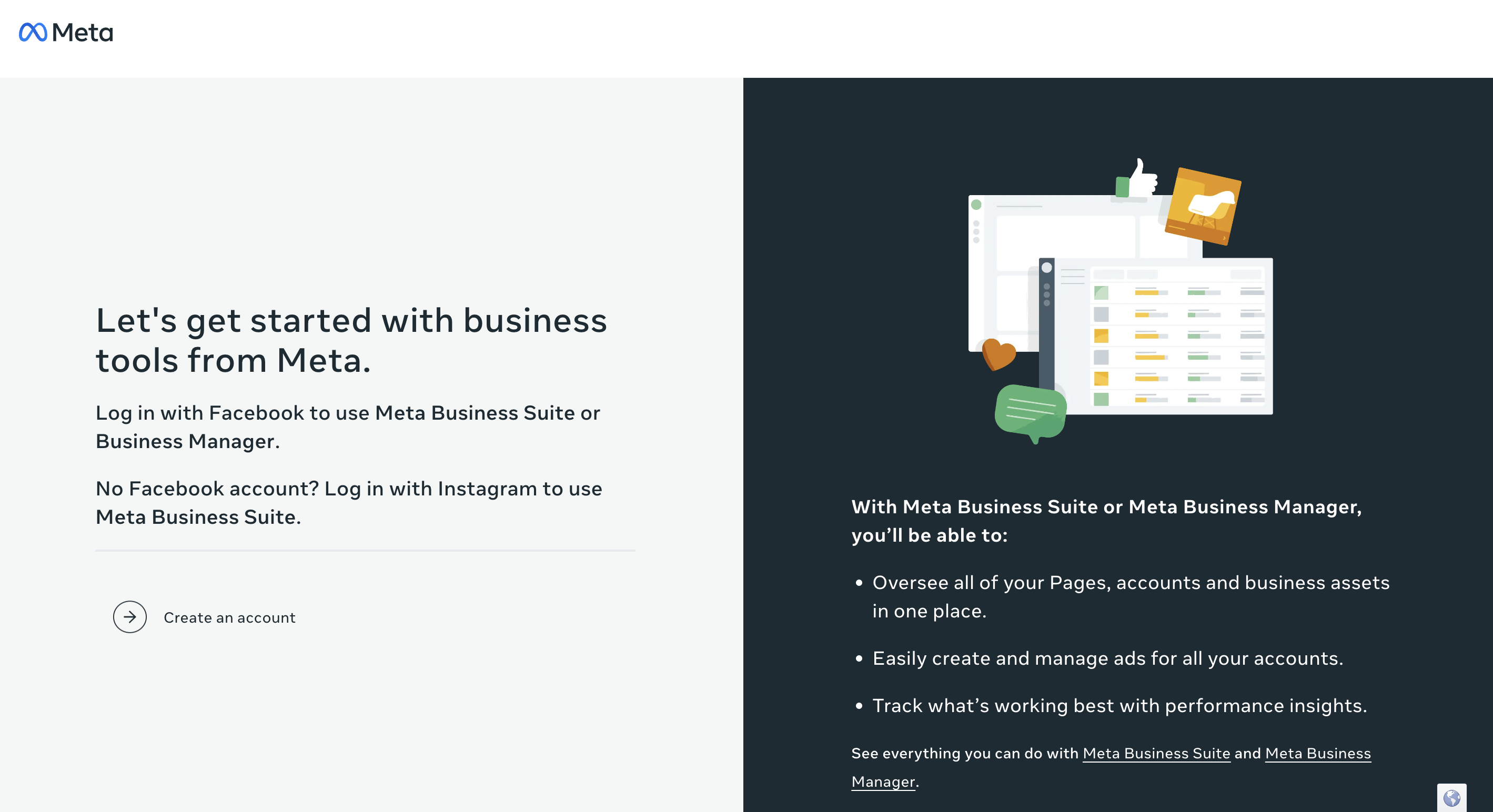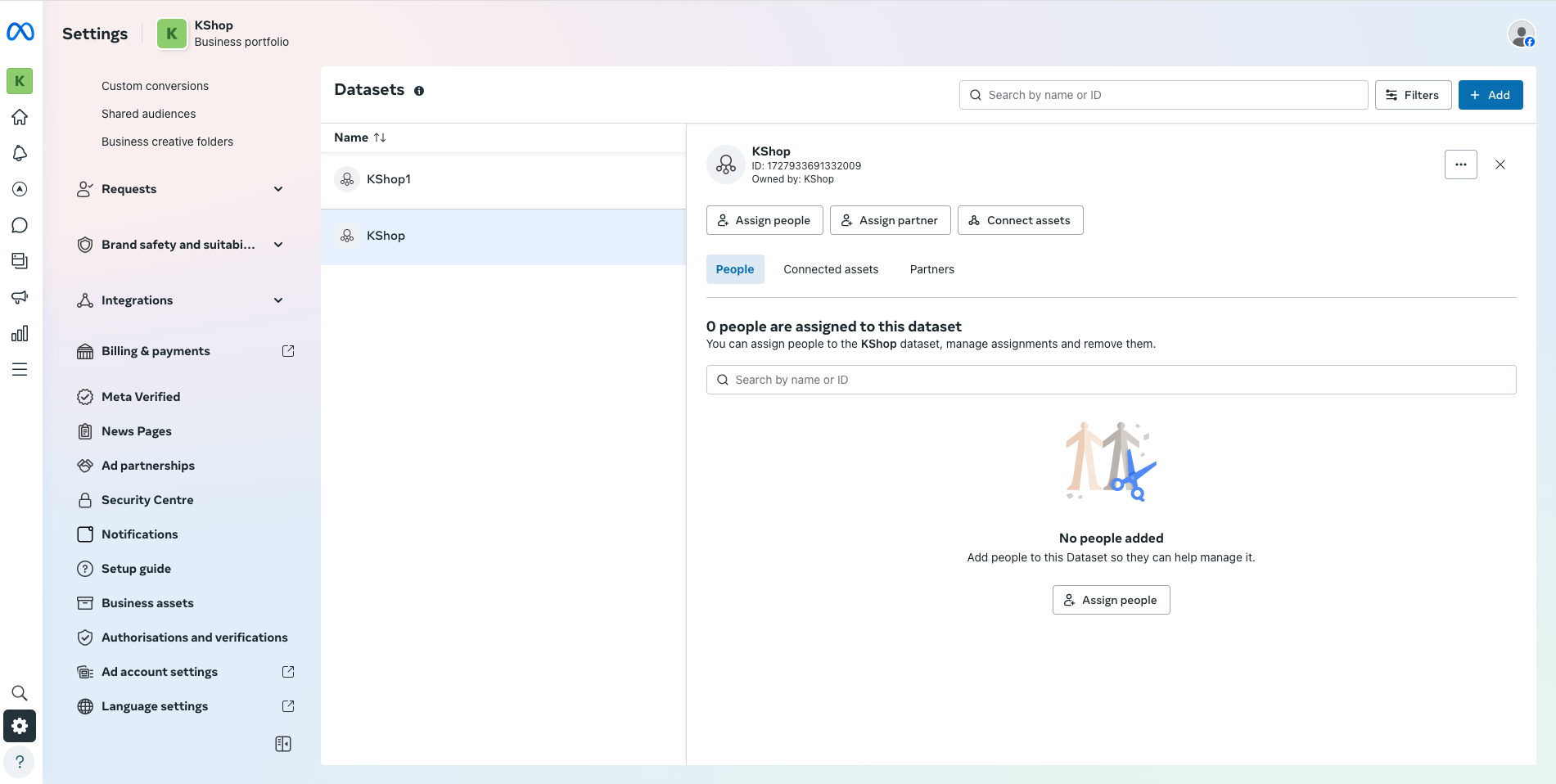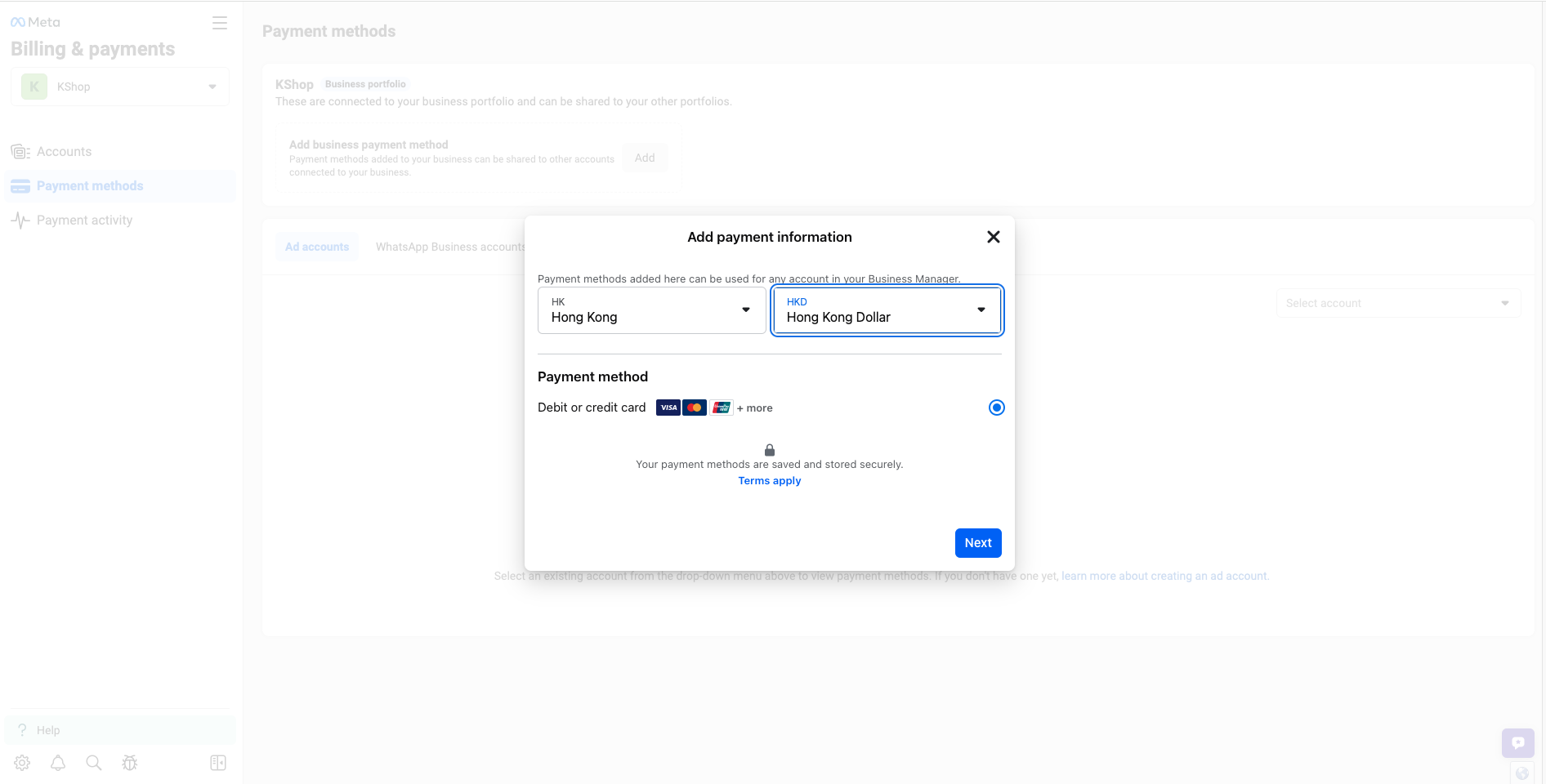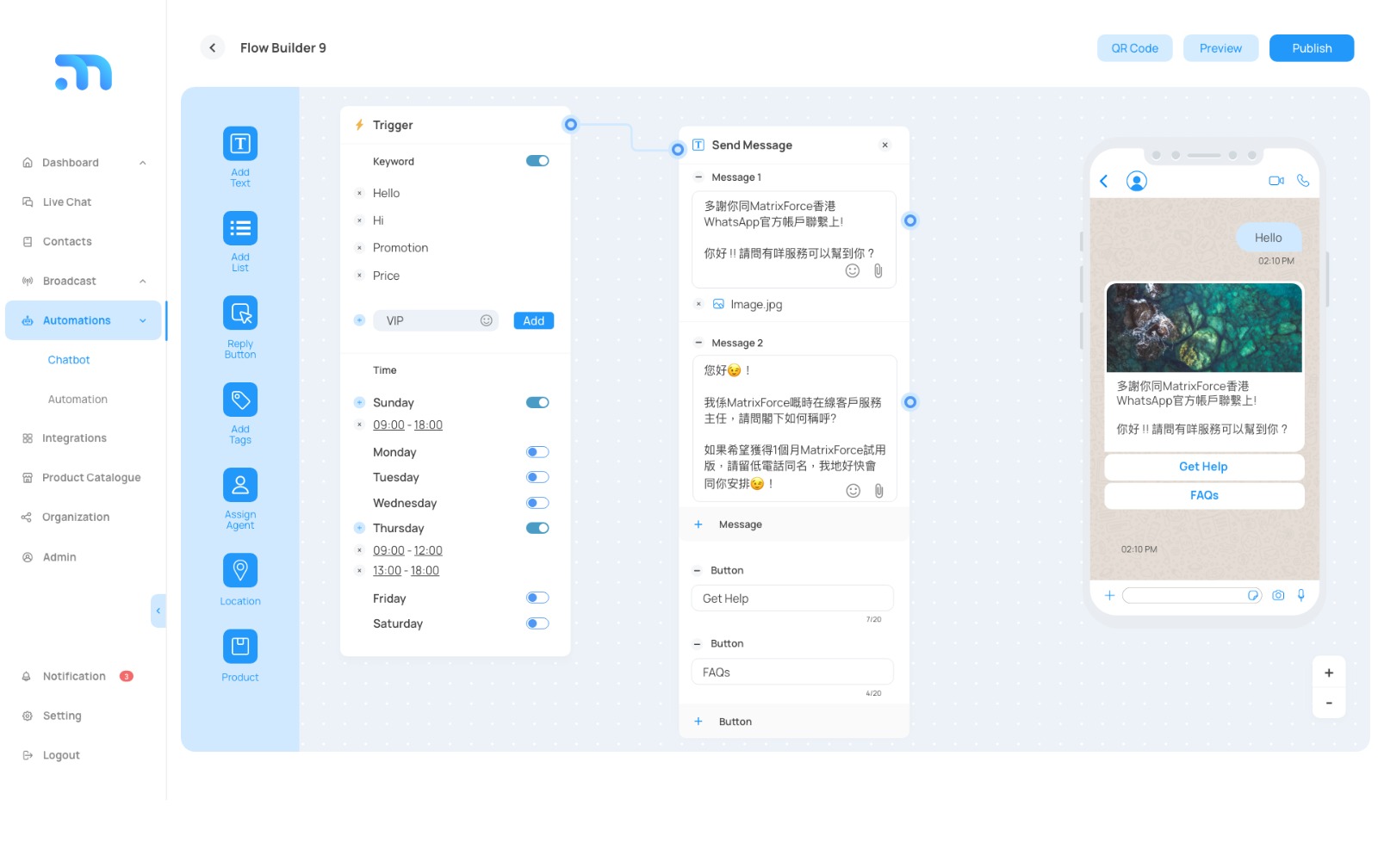
If your customer base is mainly local consumers and you want to reach more potential customers quickly, social media advertising and WhatsApp API can be considered as the two most popular ways. This article is a tutorial on Meta Ads and WhatsApp Business API for local SMEs. It explains how to utilise these two channels to increase the exposure of your products, no matter if you are a newbie or a veteran store owner!
- Large user base
In 2024, Facebook has over 3 billion monthly active users globally and Instagram has 2 billion. With such a large user base, Meta's advertisements can reach more potential users and naturally have a greater chance of acquiring new customers.
- Highly accurate ads
One of the powerful features of Meta ads is ad targeting. Through the back-end algorithm, Meta's large amount of customer data, and the user's customised ad audience settings, such as age, education level, occupation, preferences, etc. Users can advertise their brands in a cost-effective way.
- Good user experience
If you have paid attention to the advertisements of different social media, you will find that the pop-up ads on YouTube and some webpages are not skippable or the close button is difficult to click, which often makes users feel troublesome; in contrast, the ads on Facebook and Instagram allow us to skip them with a single swipe, which brings better user experience and reduces the risk of bringing negative perception to the brand.
Facebook and Instagram have a variety of ad types to suit different needs, for example:
- Picture ads: Pictures with text, the most common type of ads.
- Video ads: dynamic ads with flexible content design.
- Event Ads: Used to promote a Facebook event
- Carousel Ads: One ad can contain multiple images or videos.
- Collection ads: displaying multiple products or services in a single frame.
1. Open a Meta Business Suite account

Log in your Meta account and enter Meta Business Suite. Follow the instructions to set up the platform.
2. Set up Meta Pixels

Meta Pixels is a set of code on a website that is used to measure and optimise the marketing of an advertisement and to build its audience. Simply put, it is a must-have data analysis tool for Meta advertisers!
To set up Meta Pixels, go to the Meta Business Suite setup page, click on “Data sources” on the left column, and then click on “Datasets”. Enter the name of your customised dataset and select “Manual API” or “Partner Integration Tool” according to your needs.
3. Create an ad account

Click “Accounts” on the left column and click “Ad accounts”. Click “Add” and choose “Create a new ad account”; enter details as instructed.
4. Add billing information

Click “Billing & payments” on the left column and you will be led to a new page. Click “Add payment methods” and then “Add business payment method”. Key in the details.
5. Set up ad audiences

Users can add new audiences before placing ads and then target them directly. There are two types of audiences:
- Custom Audiences: Users choose their own audience according to their needs and preferences.
- Lookalike Audiences: Meta uses algorithm to filter out the audience with similar behaviour to the Custom Audiences.
To create an audience, you need to go to the Ads Manager page on the Ads Account page, and then click “Audience” on the left side of the page to create an audience according to your needs.
6. Create an ad
Click “Campaigns” on the left column and create the ad!
On the Ads Manager page, you'll see a number of metrics that are important for measuring and improving the efficiency of your ads, here's a brief overview of some of the key metrics:
Bid strategy: The way you want Meta to bid on your bids. This is shown as Lowest Cost, Cost Cap, Bid Cap, Target Cost, Maximum Value, or Minimum Ad ROI.
Budget: This field displays the amount of the budget previously entered by the user, either as a single day budget or as a total budget.
Attribution setting: Attribution setting is set to a specific time frame during which conversion events can be attributed to your ad. For example, if a user sets the conversion event to ‘completed registration’, the attribution condition is set to ‘2 Days After View’. When a customer registers within 2 days of viewing the ad, Meta will attribute this behaviour to the effectiveness of the ad, and the number in the ‘Results’ field next to it will be +1.
Results: User-defined marketing objectives, such as ‘clicked on the ad’ and ‘completed registration’.
CPM (Cost Per Thousand Exposures): Calculated as [(spend x number of exposures) x 1,000 exposures]
CTR (Click Through Rate): Calculated as the percentage of times a user clicks on any of the links in the content of your advert after viewing it; calculated as [number of clicks on the link ÷ number of exposures]
When placing advertisements on Meta, many merchants will choose to include a WhatsApp link to their shops in the advertisement content, so that customers can contact them directly to provide personalised assistance. However, when merchants are unable to handle all the enquiries or miss out some customers, they will miss out on the business opportunity, which in turn reduces the effectiveness of the advertisement and wastes the marketing cost. Due to the lack of automation, merchants are also unable to send promotional offers or conduct effective customer management in real time.
To solve these problems, merchants can consider using WhatsApp Business API, which allows them to manage all customer messages on one platform and implement auto-replies to improve the efficiency of customer interactions. This not only improves message open and reply rates, but also allows merchants to better understand which offers are most attractive to their customers, while streamlining the process of membership registration and product redemption. In addition, there are a number of WhatsApp Business API providers in the market, such as MatrixForce and SleekFlow, etc. Merchants can choose the right provider according to their needs to maximise the efficiency of their business operations.
SleekFlow

SleekFlow's omni-channel social commerce software allows you to drive e-commerce through social and communication applications such as WhatsApp, Facebook, Instagram, SMS, providing a complete customer journey from conversation to conversion.
Benefits
- Ability to integrate with thousands of tools such as e-commerce platforms and payment methods
- Easily automate the entire customer journey
- Tailored business solutions for different industries
- Integrate messages from all channels in one inbox
MatrixForce

MatrixForce is an enterprise-grade omni-channel conversational commerce platform for OMO sales, messaging and customer service. With a highly secure, user-friendly and powerful all-in-one real-time chat platform, MatrixForce allows you to manage your customers across all channels through a single application, assisted by artificial intelligence automation.
Benefits:
- User-friendly interface and a targeting and sales-driven platform
- Accelerates sales, shortens sales cycles and increases consumer loyalty.
- Merchants can easily build their own chatbots and manage customer profiles.
- Promote your brand or product through stickers, coupons, etc.
If you wish to learn more about how to choose a suitable solution provider, click 'Started now' below to connect with KPay's digital transformation experts and learn more!

